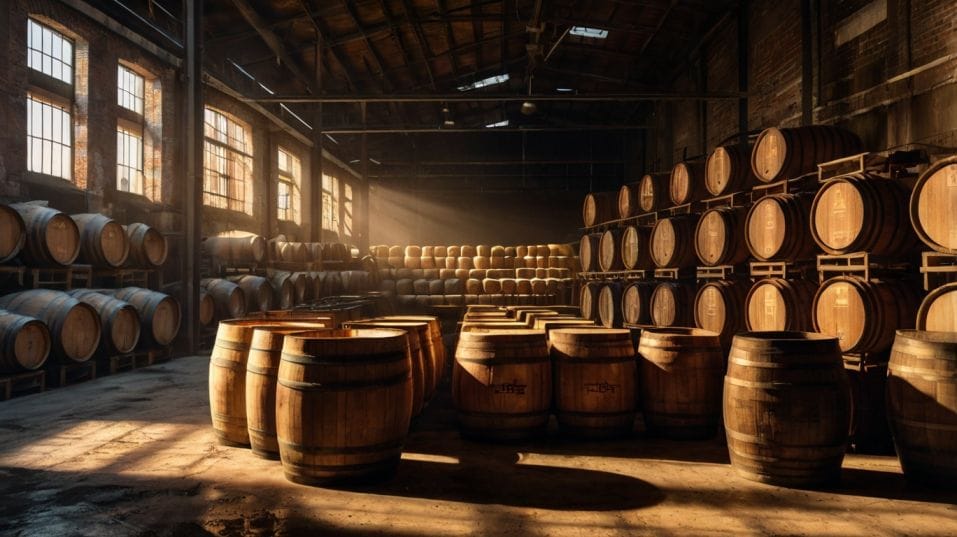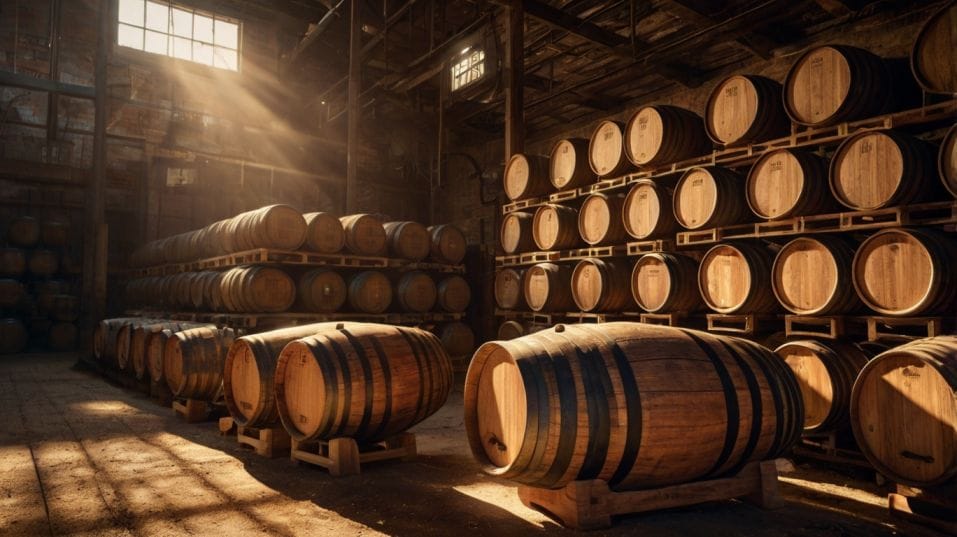Single Malt ≠ Single Barrel — Here’s Why
Confused by single malt vs. single barrel? Learn the difference so you can buy better, taste smarter, and build a whiskey shelf with purpose.

Think single malt means it came from one barrel? You’re not alone—and you’re not right. If you’re starting to take whiskey seriously, knowing the difference between single malt and single barrel is essential.
One is about blending for signature flavor. The other is about bold, unfiltered individuality. Learn to spot the difference and you’ll never be fooled by a fancy label again.
What “Single Malt” Really Means
Spoiler: “Single malt” doesn’t mean “one barrel.” It never has. And if you’ve been using it that way, this is your course correction.
Let’s start with the facts. A single malt whiskey is made from:
- 100% malted barley
- Distilled at one single distillery
- Usually distilled using pot stills
- Typically aged in oak barrels for a minimum number of years (depends on the region)
That’s it. The “single” refers strictly to the distillery. Not the barrel. So a single malt is not a “solo cask” expression—it’s usually a mix of many barrels from the same distillery, brought together to achieve a consistent profile.

How Single Malts Are Crafted
Here’s where it gets more interesting: master blenders will pull dozens (sometimes hundreds) of barrels—each aged differently, sometimes in different cask types (bourbon, sherry, wine, etc.)—to craft the final product.
Even with an age statement, like 12 or 18 years, the youngest barrel sets the clock. The rest could be older.
So that 12-year single malt? It might include 14-, 16-, even 18-year-old casks. But because there’s blending involved, the final result isn’t about showing off the quirks of any one barrel—it’s about balance. Harmony. Style.
This is how you get that signature house character: Macallan’s dried fruit and oak. Glenlivet’s orchard lightness. Lagavulin’s dense peat and smoke.
These are built. They’re not accidents. They’re not random. That consistency is engineered by blending barrels—not by bottling one-off casks.
What “Single Barrel” Means—and Why It’s a Whole Different Beast
Now let’s flip it. Single barrel whiskey does exactly what it says: it comes from one individual barrel. No blending, no smoothing, no backup plan. That bottle is a snapshot—uncurated, unfiltered (sometimes literally), and full of personality.
Why Single Barrel Tastes Different
You might see a label that says:
- Barrel No. 2863
- Bottled by hand
- Proof varies from batch to batch
- “Cask strength” or “barrel proof” (another layer of rawness)
This is not the whiskey equivalent of a polished album. It’s the live bootleg. Sometimes glorious, sometimes flawed, but always real.
You’re tasting exactly what that one barrel had to offer, shaped by its position in the warehouse, the climate, the wood, the age, and pure luck.
And here’s the payoff: no two single barrels are exactly alike. Even within the same distillery, the same mash bill, the same year—you’ll find differences.
Subtle or dramatic. One barrel might lean dry and spicy, another lush and fruity. Some might be head-turning; others might be forgettable.
This is where the game gets personal. Collectors chase certain barrels because they’ve learned which warehouse locations, barrel numbers, or selectors produce their favorite results. It’s not random. It’s surgical.
If you’re just chasing labels without paying attention to the barrel number, you’re missing the point.
What This Means for You (The Smart Whiskey Drinker)
Understanding this difference isn’t about gatekeeping. It’s about power. Because once you know what you’re looking at, you stop being a passive drinker.
You stop being swayed by price tags or pretty bottles. You start choosing your whiskey with intent.
When to Choose Which
If you want consistent, refined, layered experiences that reflect a distillery’s core identity—go for single malts. They’re educational. They give you a sense of place, of style, of tradition. Great for building a foundation.
But if you’re after character, risk, edge—single barrel is where it’s at. Each bottle is a roll of the dice. You might find one that hits like magic.
You might find one that tastes like a lumberyard. That’s part of the thrill. It teaches you to taste critically. It sharpens your palate fast.
Also—don't be fooled by labels like “small batch.” That term has zero legal definition in most regions. It might mean five barrels. It might mean five hundred. If the brand isn’t telling you the barrel count, assume they’re hoping you won’t ask.
One More Twist: “Single Malt” + “Single Barrel”
Yes, these can overlap. Some distilleries (especially newer craft producers) are bottling single malt single barrels.
These are 100% malted barley, from one distillery, from one barrel. If you want to taste the raw DNA of a distillery—stripped of all blending, all polish—this is your best shot.
You’ll taste the grain, the wood, the fermentation, the barrel's quirks, and the distillery’s choices, all without a filter. These bottles are rare. They’re expensive. But they’re also some of the most honest expressions on the market.
Final Thoughts
Let’s be clear: single malt doesn’t mean better. Single barrel doesn’t mean rarer. Each style offers something different, and both belong on your shelf—for different reasons.
If you’re collecting, stop buying blindly. Start building with purpose. Fill your lineup with bottles that teach you something.
Use single malts to map distillery styles, regional differences, and cask finishes. Use single barrels to train your palate, expand your range, and discover wild cards worth remembering.
You’re not here to drink like everyone else. You’re here to drink like someone who gets it.
So here’s your next move: pick up a classic single malt from a distillery you’re curious about. Then grab a single barrel bourbon or rye from a bottle shop that lists barrel numbers.
Taste them side by side. Pay attention. Then decide what your shelf is missing. Build it. Bottle by bottle. Barrel by barrel. That’s how you do whiskey right.




